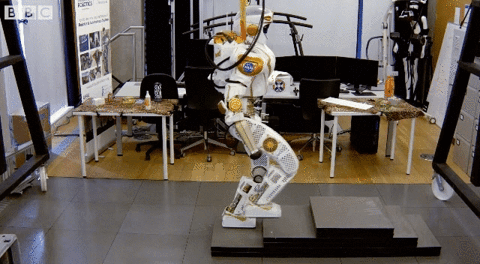Surveilling Homelessness Using AI in San Jose
A story in the Guardian has sparked controversy on X, San Jose in the Bay area is using Artificial Intelligence to pilot an automated surveillance program that will collect footage across public spaces and streets to “detect unwanted objects”
The program kicked off in July 2023 with an open invitation for tech companies to mount surveillance cameras on a municipal-owned vehicle which would start periodically driving around the city district as of 10th December. The vehicle had to apparently collect every footage, feed them into a computer vision system, and train algorithms to discern unwanted objects.
While the capabilities of the program are many, including identifying potholes or even cars parked the wrong way, its main goal is recognizing encampments.
Khaled Tawfik, the director of information technology in San Jose has said in city documents that the project will preserve people’s privacy, he said “we are not detecting folks, we are detecting encampments”
However, the story has gotten less popular among local outreach workers who are worried the technology could be used to eradicate San Jose’s homeless residents.
Meanwhile, with projects like this one setting a precedent for more AI use cases, we might see an increase in automated surveillance across major cities in the world.
Well, let’s dive into the topic of the day.
Most Popular AI Trends in 2024
Quantum AI
Quantum AI is a computing field that has emerged from the need for powerful computers that meet the modern requirements of researching, developing, and improving Artificial Intelligence products.
Today’s AI models and products have pushed classical computers to the edge, even stretching them beyond their limits. This has made it more challenging for Artficial Intelligence developers to explore more sophisticated use cases that demand complex computing power, sophisticated algorithmic efficiencies, and resource-intensive problem-solving capabilities.
Market Digit’s report predicts the global Quantum AI sector will attain a $1.8 billion valuation by 2030 with a growth rate of 34.1% CAGR that begins in 2023. The power from Quantum computers will revolutionize AI applications across financial modeling, risk assessment, pharmaceuticals, and the achievement of AGI (Artificial General Intelligence) – which is the capability of a computer to perform tasks at human intelligence level.
Autonomous AI and Autonomous Agents
Autonomous Systems is the utopia that the majority of AI proponents envision, a world where machines will do all the work for humanity. This category encapsulates almost everything about artificial intelligence, including an automated surveillance program like the one San Jose is piloting.
In Artificial Intelligence, autonomous systems perform tasks either as a single chain or in a row to arrive at a desired goal. Their performance is made possible by harnessing the power of large language models. Below is a prediction for Autonomous AI and Autonomous Agents for the 2022 – 2028 forecast period:

The prevalence of autonomous AI and agents emerges from the rapid adoption of Artificial Intelligence across different domains across healthcare, finance, manufacturing, supply chain, logistics, and transport. This industry leverages machine learning, advanced algorithms, and data analysis models to extract and act on valuable insights to automate decisions.
Ethical AI
Ethical AI or AI governance falls under applied ethics. The goal of this subset is encouraging fairness, accountability, transparency, respect for human values, and observation of human dignity. The goal is to ensure Artificial Intelligence products are safe and inclusive for all.
As of 2024, the AI governance market commands a global valuation of $264.18 million. For the forecast period 2024 – 2029, the size is expected to grow at 28.80% CAGR and attain $936.44 million by 2029.

AI-Driven Healthcare
Mia, an AI tool that was successfully tested by the NHS across 10,000 women helped identify tiny signs of breast cancer which doctors missed during previous tests. Majority of the 10,000 women who helped pilot test the tool were cancer-free.
Tools and AI products like Mia are set to play a major role in global healthcare as medical facilities continue to see Artificial Intelligence as a disruptive approach for improved patient outcomes, reduced cost of healthcare, and providing proactive preventive care for patients.
The global AI healthcare industry size is valued at $20.9 billion as of 2024 and is predicted to grow at a 48.1% CAGR by 2029 and reach $148.4 billion.

Natural Language Processing (NLP) Advancements
Requesting a recipe from Amazon’s Alexa, fact-checking with Siri, or using Shazam to find a song are some of the ways we know natural language processing. ChatGPT, which is frighteningly good, is one of the latest advancements in natural language processing.
Natural Language Processing (NLP) is a branch of Artificial Intelligence that deals with how machines derive meaning from natural human language. There are two levels oLP, data preparation and algorithm development.
Attaining a level where machines can understand and process human language is not an easy fit, especially having to dissect abstract concepts across things like sarcasm or satire, besides, up to 64% of English words have more than one meaning.
NLP already has applications across multiple industries in customer support, the Internet of Things, tailored advertisement, and even domains you least expect such as stock trading. The Market size of the Cloud Natural Language Processing sector is expected to grow at a CAGR of 23.56% between 2024 and 2032.
However, the graph below represents the expected growth of NLP as from studies undertaken by Statista, while the former forecasts are from Zion Market Research.

Edge Computing and AI
The best example for Edge Computing and AI are self-driving cars which constantly collect and process data around them within milliseconds. The data has to be analyzed and acted upon in real time since it would be inconvenient to move it and back across a cloud computer.

One of the goals of edge computing is to close the distance gap between field devices and data storage. Artificial Intelligence, on the other hand, enables these devices to become smarter and make decisions on their own without relying on an offsite database.
AI-Powered Robotics
A conversation about AI-powered robotics is taboo if it doesn’t mention Sophia, history’s first humanoid robot. Quite a kickass robot, Sophia has a Saudia Arabian citizenship and a job as the Global Ai Show & Global Blockchain Show’s official ambassador. Hence, it is such a kicker that she will be leading discussions at this year’s event which will take place in Dubai between April 16th to 17th.
Robotics has a history that dates back to the Industrial Revolution. However, they advanced significantly between the 90s and 2000s, even showing up at inter-school science competitions. Today, robotics are highly advanced with the sector taking over 38% of the automotive industry and a large segment of the electronics industry.
Since the release of the latest AI models, neural networks, natural language processing, and machine perception, AI robotics continue to become more sophisticated with the likes of Sophia able to recognize human emotion, discern faces, and understand hand gestures.
Federated learning
Federated learning is an emerging concept in Artificial Intelligence that aims at collaborative training of AI models using multiple touchpoints and data feeds that are often decentralized.
The term “federated” started showing up across major conversations around 2016 when the big five were facing global controversy with their handling of personal data. Today, the global Federated Learning market size is worth $133.1 million and could hit $311.4 million by 2032, as per estimations by Markets.us.
AI in Cybersecurity
Experts believe artificial intelligence could help solve some of cyber security’s most pressing challenges like the shortfall in skilled computer security experts, vast attack surface, multiple attack vectors, or the limitations of ensuring security when operating tons of devices in an organization.
A self-learning cyber security AI model can continuously learn and gather independent methods for countering criminals and penetrations. Below is the estimated growth curve for global AI cybersecurity:

Augmented intelligence
As the name suggests, augmented intelligence is a subset of the Artificial Intelligence market that aims to enhance the efficiency and productivity of AI technologies by harnessing human expertise.
By doing so, individuals and businesses can unlock significant results, and deeper insights when executing autonomous systems.

In 2024 and beyond, Artificial Intelligence will continue to improve with stakeholders more resilient and adaptive than ever to deliver new innovations and capabilities. All for the sake of benefiting both consumers and enterprises.
Disclaimer: All materials on this site are for informational purposes only. None of the material should be interpreted as investment advice. Please note that despite the nature of much of the material created and hosted on this website, HODL FM is not a financial reference resource and the opinions of authors and other contributors are their own and should not be taken as financial advice. If you require advice of this sort, HODL FM strongly recommends contacting a qualified industry professional.







